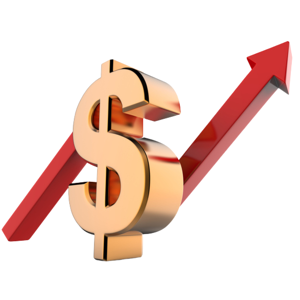Tavex uses cookies to ensure website functionality and improve your user experience. Collecting data from cookies helps us provide the best experience for you, keeps your account secure and allows us to personalise advert content. You can find out more in our cookie policy.
Please select what cookies you allow us to use
Cookies are small files of letters and digits downloaded and saved on your computer or another device (for instance, a mobile phone, a tablet) and saved in your browser while you visit a website. They can be used to track the pages you visit on the website, save the information you enter or remember your preferences such as language settings as long as you’re browsing the website.
| Cookie name | Cookie description | Cookie duration |
|---|---|---|
| tavex_cookie_consent | Stores cookie consent options selected | 60 weeks |
| tavex_customer | Tavex customer ID | 30 days |
| wp-wpml_current_language | Stores selected language | 1 day |
| AWSALB | AWS ALB sticky session cookie | 6 days |
| AWSALBCORS | AWS ALB sticky session cookie | 6 days |
| NO_CACHE | Used to disable page caching | 1 day |
| PHPSESSID | Identifier for PHP session | Session |
| latest_news | Helps to keep notifications relevant by storing the latest news shown | 29 days |
| latest_news_flash | Helps to keep notifications relevant by storing the latest news shown | 29 days |
| tavex_recently_viewed_products | List of recently viewed products | 1 day |
| tavex_compare_amount | Number of items in product comparison view | 1 day |
| Cookie name | Cookie description | Cookie duration |
|---|---|---|
| chart-widget-tab-*-*-* | Remembers last chart options (i.e currency, time period, etc) | 29 days |
| archive_layout | Stores selected product layout on category pages | 1 day |
| Cookie name | Cookie description | Cookie duration |
|---|---|---|
| cartstack.com-* | Used for tracking abandoned shopping carts | 1 year |
| _omappvp | Used by OptinMonster for determining new vs. returning visitors. Expires in 11 years | 11 years |
| _omappvs | Used by OptinMonster for determining when a new visitor becomes a returning visitor | Session |
| om* | Used by OptinMonster to track interactions with campaigns | Persistent |
| Cookie name | Cookie description | Cookie duration |
|---|---|---|
| _ga | Used to distinguish users | 2 years |
| _gid | Used to distinguish users | 24 hours |
| _ga_* | Used to persist session state | 2 years |
| _gac_* | Contains campaign related information | 90 days |
| _gat_gtag_* | Used to throttle request rate | 1 minute |
| _fbc | Facebook advertisement cookie | 2 years |
| _fbp | Facebook cookie for distinguishing unique users | 2 years |
Gold and Its Connections with Recessions

There have been 13 recessions since 1945, occurring about six years apart on average.
This article will look at the intricate relationship between gold and recessions over a long term lense. It will explore how economic downturns shape the value of this precious metal.
From defining a recession and its impacts on the global economy to examining gold’s performance during these turbulent times, we uncover the reasons behind gold’s reputation as a safe-haven asset.
Through a historical lens, we highlight major great recessions over the last century and their unique effects, ultimately shedding light on why and how gold prices tend to rise amidst economic instability.
What is a Recession?
A recession is characterised by a significant decline in economic activity across the economy, lasting more than a few months. It is visible in industrial production, employment, real income, and wholesale-retail trade.
A technical recession is often defined as two consecutive quarters of negative economic growth as measured by a country’s gross domestic product (GDP).
Recessions lasting a year or more are reclassified as depressions
Major Recessions in the Last 100 Years

The last century has seen several significant recessions.
These include the Great Depression of the 1930s. Since the World War II there has also been the oil crisis of the 1970s, the early 1980s recession, the early 1990s recession, and the Financial Crash of 2008/2009. The global epidemic caused by Covid-19 resulted in severe economic downturn in 2020 and 2021.
Each of these periods had unique causes and impacts on the global economy.
Additionally, world depressions happened in 1640, 1837, the lengthy slump from 1873 to 1896, and the Great Depression of the 1930s. This was possibly the most severe, spanning 1929 to 1939 and culminated in the Second World War.
Gold Prices in a Recession
Historically, gold has been considered a safe-haven asset during times of economic uncertainty.
In recessions, while most asset prices tend to fall, gold prices have often increased or maintained their value. This trend is attributed to gold’s intrinsic value, its status as a hedge against inflation, and its independence from the performance of other financial markets.
Additionally, another factor to consider is the fact that gold has a limited supply, but money is made of paper, which can be created. The difficulty is that this rapidly inflates the value of all products and services, a phenomenon known as hyperinflation.
Many countries, particularly Germany, learned this the hard way, with excessive money printing and cash flow causing hyperinflation and an inability to afford even basic items in the mid-1920s.
The Effects of a Recession
Recessions can have widespread negative effects on an economy, including increased unemployment rate, reduced consumer spending, and a decline in industrial production.
These factors can lead to decreased confidence among consumers and investors, further exacerbating the economic downturn. Many job losses occur during a recession, with rising unemployment being a key factor at the beginning of an economic downturn.
Additionally, other commodities such as oil also see large price increases as a result of a recession. For example, oil prices in the Unites States saw a sharp increase post World War II.
What Happens to the Price of Gold in a Recession?

The price of gold typically rises due to its perceived safety among investors. As stocks, bonds, and real estate values decline, investors often turn to gold as a way to preserve their wealth.
This increased demand can drive up gold prices, making it a potentially lucrative investment during economic downturns.
Key Takeaways
- There have been 13 recessions since 1945, with an average occurrence of about every six years.
- Gold is considered a safe-haven asset during economic downturns, often increasing or maintaining its value in recessions.
- Major recessions have unique causes and effects, including the Great Depression and financial crises up to COVID-19.
- Gold’s value rises in recessions due to its scarcity, intrinsic value, and as a hedge against inflation and currency devaluation. It is popular due to its independence from stock price and share price fluctuations.
- Recessions lead to increased unemployment, reduced consumer spending, and decreased economic confidence, further driving gold’s appeal as a stable investment.

















